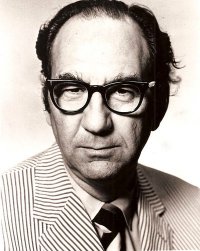|
|
|
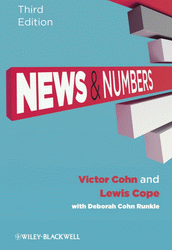
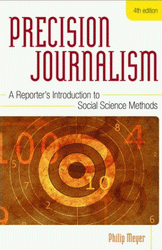
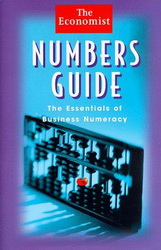
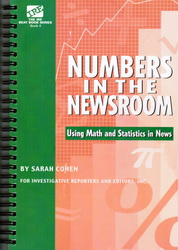
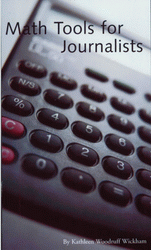
This page is dedicated to Victor Cohn (above, 1919-2000),
who authored the classic "News and Numbers."
See Highlights,
Schield-Cohn-Retrospective-6up.
The Victor Cohn prize for excellence in medical science reporting.
1989:
First Edition:
Introduction and Table of Contents.
2001:
Second Edition -- coauthored with Lewis Cope.
2011:
Third Edition -- coauthored with Lewis Cope and Deborah Cohn Runkle.
Numbers Please: We're Journalists
By
Nicole Bailey
News with
numbers. NewsLab blog by Deborah Potter. 12/29/2009
Why Journalists
Can't Add by Dan Seligman. Jan 21, 2002 Forbes.
"There are a lot of people in the public who are
intimidated by numbers and I think a lot of them become reporters and
editors." – Tom Barrett, political reporter, The Vancouver Sun
“Simply reporting what someone said or did is no longer enough to ensure an
information professional’s career,” says Robert Niles, editor of the Online
Journalism Review and author of an online statistical primer. “Information
professionals who wish to survive the Internet age must be able to
synthesize and analyze words, deeds, and data so that they can report to
their readers and clients the reality of what is happening in their world
today.”
Why Math Matters by Chip Scanlon.
WHAT-TO BOOKS ON NUMERACY FOR JOURNALISTS:
HOW-TO SOURCES ON NUMERACY FOR JOURNALISTS:
WEB SITES ON NUMERACY FOR JOURNALISTS:
-
Statistics Every Writer
Should Know -- by Robert Niles (Online). Topics: Mean, median
and percent; Per capita and rates; Standard deviation and normal
distribution,
Margin of
error and confidence interval;
Data
analysis (Where did the data come from?, Have the data been
peer-reviewed? How were the data collected?; Be skeptical when
dealing with comparisons, Be aware of numbers taken out of context),
Sample sizes; Finding data on the internet; and statistical tests.
-
Website Journal of the National Cancer Institute:
Reporting on Cancer Research. Tip-sheets:
Number glossary (absolute risk, relative risk),
Statistics glossary (p values, confidence intervals, survival);
Questions to guide reporting (e.g., how important are the
outcomes?); and
How to highlight study cautions (useful phrases)."
-
More Numerate: Numbers and
Evidence for News Writers
"What is the Numbers, News, & Evidence
Project? Quantitative data are central to the presentation of
high-quality information, yet making sense of numbers has not been
considered the greatest strength of journalists and many other
professionals. Knowledge of numbers affects reporters writing about
topics as diverse as the local school district budget to the latest
scientific reports on global warming. Supplying meaningful
information to the populace can be seen as a key journalistic
pursuit. To date, there have been few systematic instructional
approaches used in journalism schools to help reporters improve
their understandings of numbers. To address this problem, we have
developed a two-week post-secondary module to improve quantitative
awareness, critical analysis, and evidence-based perspectives among
journalism students and journalism instructors."
-
Statistical Literacy blog by Armin Grossenbacher.
-
Stats and Stories:
Radio show/podcast involving news and numbers by John Bailar and
Richard Campbell (director of the journalism program at Miami
University in SW Ohio). "Our first program on 'Baseball and
statistics' ... includes an interview with Jim Albert (the editor of
the Journal of Quantitative Analysis and Sports) and a package and
person-on-the-street interviews produced and conducted by student
reporters (see the “About” page on this website for a listing of all
participants)." "Suggestions for future topics (and guests) are
welcome. Topics should be wide ranging covering serious and lighter
topics...".
-
IASSIST: International
Association of Social Science Information Services and Technology
- Databrariarns:
Wide-ranging blog. See
Moving students from reference to critical data literacy
ARTICLES ON NUMERACY FOR JOURNALISTS:
-
Thinking with Data: A Cross-Disciplinary Approach to Teaching Data
Literacy and Proportionality. Presented at the Annual
Conference of the American Educational Research Association, May
2010, Denver, CO. "The TWD project has designed and
evaluated a set of four 2-week, integrated modules for
cross-disciplinary implementation in 7th grade social studies,
mathematics, science, and English language arts. We have found that
standards in all four subject areas address three broad categories
of data literacy: formulating and answering data-based questions;
using appropriate data, tools, and representations; and developing
and evaluating data-based inferences & explanations."
-
Designing and assessing numeracy training for journalists: Toward
improving quantitative reasoning among media consumers --
by Ranney, M. A., Rinne, L. F., Yarnall, L., Munnich, E., Miratirx,
L., & Schank, P. (2008). In P. A. Kirschner, F. Prins, V.
Jonker, & G. Kanselaar (Eds.), International Perspectives in the
Learning Sciences: Proceedings of the Eighth International
Conference for the Learning Sciences, Volume 2 (pp. 2-246 to 2-253).
International Society of the Learning Sciences, Inc.
-
Help Yourselves (and the Public) Know the Truth by Victor
Cohn in Significance 1999.
-
How to Help Reporters Tells the Truth --
by
Victor Cohn (Author of News and Numbers), ASA 1999
"I believe that six principles pretty much sum up what the media and
the public need to know about statistical thinking: (1) the
certainty of uncertainty (2) the use of probability. (3) the power
of large numbers (4) the danger of bias (5) the ubiquity of
variation, and (6) the hierarchy of studies. I believe that by your
imparting these principles, we – the media and the public – can go a
long way toward judging the claims and statistics that are thrown at
us."
-
Toys, Tales,
and a Journalist’s View of Statistics -- by Lewis Cope ASA 2005.
Excerpt: Four Key Tests 1. Bigger numbers are better. 2.
All studies aren’t equal. (Did the study last long enough?
Does the difference make a difference? Should the
findings be applied broadly or narrowly?) 3. Is there another
explanation? 4. Peer review and journalistic
review. (Is there possible bias? Is there a scientific
fit? Is it useful and practical? What now?)
-
Statistics for Innumerate Journalists
-- by Stephen Doig (Arizona State Univ.) 2007 ASA
4up slides
SEMINARS AND WORKSHOPS ON NUMERACY FOR JOURNALISTS:
-
Basic Numeracy for Journalists -- two-day workshop by Derek
Luyt at the Institute for the
Advancement of Journalism (Union of South Africa).
Outcomes: (1) An understanding of the importance of numbers and
statistics for journalists across a wide range of stories; (2) A
clear grasp of the basic numeracy skills which all journalists need
in order to improve their reporting; (3) A basic understanding
of the questions which journalists need to ask (and answer) in
considering the validity and usefulness of the numbers and
statistics they come across in the course of their investigations;
(4) A range of sources and contacts useful for investigating and (5)
Reporting on numerical and statistical related stories; (6) An
appreciation of how the appropriate use of numbers can bring, and
(7) Greater significance, and interesting angles, to your stories.
-
Thinking With Data -- The Thinking With Data (TWD)
initiative addresses the development and use of technology to
increase the data literacy of teachers and students. TWD promotes
engagement with statistics, probability and scientific inquiry
across the curriculum, preparing students to use the increasing
amount of societal and scientific data available on the Internet.
-
2011: Medicine in the Media July 13–16, 2011 Dartmouth College
Agenda
-
2010: RSS Workshop for Journalists on Health Stats. "This
workshop will help journalists see through the numbers behind big
stories in health and medicine. Focusing on real stories from recent
news, topics will include: •Swine flu and other epidemics •Medical
trials – how to assess the evidence •What is a ‘quality adjusted
life year’ and how do we measure it? •The ‘Spirit Level’ – is a more
equal society really better for everyone? •Reporting risk
responsibly •Making fair comparisons between the performance of
hospitals and surgeons •Common pitfalls in reporting statistics."
ARTICLES ON DATA LITERACY:
-
Thinking with Data: A Cross-Disciplinary Approach to Teaching Data
Literacy and Proportionality. Presented at the Annual
Conference of the American Educational Research Association, May
2010, Denver, CO. "The TWD project has designed and
evaluated a set of four 2-week, integrated modules for
cross-disciplinary implementation in 7th grade social studies,
mathematics, science, and English language arts. We have found that
standards in all four subject areas address three broad categories
of data literacy: formulating and answering data-based questions;
using appropriate data, tools, and representations; and developing
and evaluating data-based inferences & explanations."
-
The Data Journalism Handbook.
-
Making
Data Meaningful -- by UN Economic Commission Europe. The
Making Data Meaningful guides are intended as a practical tool to
help managers, statisticians and media relations officers in
statistical organizations use text, tables, charts, maps and other
devices to bring statistics to life for non-statisticians.
Part 1: A guide to writing stories about numbers: The first
guide provides guidelines and examples on the use of effective
writing techniques to make data meaningful.
Part 2: A guide to presenting statistics: The second guide
provides guidelines and examples on preparing effective tables,
charts and maps, and using other forms of visualizations to make
data meaningful. It also offers advice on how to avoid bad or
misleading visual presentations.
Part 3: A guide to communicating with the media: The third guide
aims to help producers of statistics find the best way to get their
message across and to communicate effectively with the media. It
contains suggestions, guidelines and examples.
-
Mathematizing middle school: Results from a cross-disciplinary study
of data literacy -- by Vahey, P., Yarnall, L., Patton, C.,
Zalles, D., & Swan, K. (2006, April). Presented at the Annual
Conference of the American Educational Research Association, April
2009, San Diego, CA
-
Designs for assessing foundational data literacy
-- by Zalles, D. (2005).
SERC site.
-
Information Literacy, Statistical Literacy and Data Literacy --
by
Milo Schield IASSIST Quarterly 2004
"The evaluation of information is a key element in information
literacy, statistical literacy and data literacy. As such, all three
literacies are inter-related. It is difficult to promote information
literacy or data literacy without promoting statistical literacy.
While their relative importance varies with one’s perspective, these
three literacies are united in dealing with similar problems ...."
-
GLOBE Year 6 evaluation: Explaining variation in implementation.
-- by Means, B., Penuel, W. R., Crawford, V. M., Korbak, C., Lewis,
A., Murphy, R. F., Shear, L., Villavicencio, C., Vinson, E. Y., &
Yarnall, L. (2001). Menlo Park, CA: SRI International. [Global
Learning and Observations to Benefit the Environment (GLOBE)]
JOURNALISM REPORTS AND FINDINGS:
-
1995:
Tomorrow’s Broadcast Journalists — A Report and Recommendations
-- From
the Jane Pauley Task Force on Mass Communication Education, published in
1996 by the Society of Professional Journalists.
Part 1: Broadcast Journalism Education Trends and Comparisons
Part 2: Survey of TV News Directors and Broadcast Journalism Educators
"a whopping 57.9% of the news directors said none of the applicants they
were seeing was adequately prepared in terms of ability to understand
statistical materials, such as a budget." "In general, educators
are most critical of their students for not understanding statistical
material, for not understanding international affairs, for lacking
knowledge of basic economics, for not having a second language, for
their inability to do math, and for their lack of an understanding of
how to use public documents (Charts 7a, b, c & d)."
NUMERACY BLOGS FOR (OR ABOUT) JOURNALISTS
OR VISUALIZING DATA:
-
Why Math Matters -- by Chris Scanlon. "Competency with
numbers requires: (1) Basic working knowledge of arithmetic; (2)
Familiarity with statistics; (3) Ability to calculate percentages,
ratios, rates of change, and other relationships between numbers; (4)
Ability to translate numbers into terms that readers and viewers can
understand; (5) Knowing the difference between median and mean averages;
(6) Understanding of margin of error in polling; (7) Basic
understanding of probability theory; and (8) Understanding of graphs and
other pictorial representations of numbers."
-
Numeracy - a minuscule problem (2011) --
by Doug Fisher. "It's what happens when a reporter tries to change the
factor to a percent or vice versa and forgets to move the decimal."
-
Cool Statistics: Stats worth looking at
-- by Alexander
JOURNALISM INSTITUTES:
-
Poynter Institute
-
Investigative Reporters and Editors
IRE Resource Center
(member price / non-member price)
Investigative Reporter’s Handbook, 5th Edition by Brant Houston, Len
Bruzzese & Steve Weinberg-$48 for members $58 for nonmembers
Numbers in the Newsroom: Using Math and Statistics in News by Sarah
Cohen $15/$25
Computer-Assisted Research: Information Strategies and Tools for
Journalists by Nora Paul & Kathleen A. Hansen $18/$28
Computer-Assisted Reporting: A Practical Guide, 3rd Edition (ebook only)
by Brant Houston $15
Understanding Crime Statistics: A Reporter’s Guide, 2nd Edition by Kurt
Silver & Ted Gest $15/$25
JOURNALISM NUMERACY PROJECTS AND PROGRAMS:
-
Number literacy: The
Hewlett Journalism Numeracy project was based on a grant from the
William and Flora Hewlett Foundation. The project was led by the
University of California, Berkeley, and SRI International provided
support and consulting. We co-developed a supplemental curriculum to
infuse reasoning around numbers into a basic journalism graduate
education program. A set of measurement instruments was developed to
examine the effectiveness of the curriculum.
-
Data and science literacy:
GLOBE Program. "As a curriculum resource for teachers, GLOBE
offers a set of hands-on, inquiry-based activities for students. The
emphasis in participation is on accurately collecting data, within a
framework of increasing science content and conceptual knowledge, and
reporting data to the GLOBE Web site. The goals of the Program are to:
(1) help K-12 students improve their achievement in science and
mathematics and their skills in the use of computer and network
technology while helping students and teachers meet local education
standards; (2) help expand the pipeline of potential future scientists
and researchers for industry, academia, and in support of Government
programs, including those of NOAA, NASA, and NSF; (3) increase awareness
of the environment from a scientific viewpoint, without advocacy
relative to issues; and (4) improve student understanding of science
through involvement in performing real science.
At the GLOBE Annual Conference in July 2001, staff reported that more
than 17,000 teachers had completed GLOBE training, and that there were
more than 10,000 GLOBE schools in 97 countries. This reach across so
many nations means that nearly every biome on Earth is represented in
GLOBE.
GLOBE provides schools with a scientific framework and educational
resources, but it is not a curriculum. Schools and teachers are able to
choose which grade levels and classes will participate and the way in
which the Program will be integrated into the local curriculum."
JOURNALISM STATISTICS COURSES:
-
Indiana University: Statistics and Mathematics for Journalism.
Course Description Writing with Numbers: Generally accepted
conventions for presenting mathematical content in writing. Basic
Mathematics: Essential mathematical topics for the working
journalist, including percentages, inflation, and rates of change.
Descriptive Statistics: The written and graphical presentation of
statistical information. Inferential Statistics: Drawing conclusions
based on data. Spreadsheets: The use of spreadsheets to analyze and
to present data. Finding Data: A special focus in placed on the use
of the internet in find data.
RSS GETSTATS CAMPAIGN:
-
GetStats is the
Royal Statistical Society’s 10-year statistical literacy campaign.
2011 presentation at Stats Canada. "Aims to help
build a society in which lives and choices are enriched by an
understanding of statistics"
-
Statistical Awareness for citizenship: RSSCSE 20 Jan 2009.
"What a student should be able to identify and critically evaluate
This includes: newspaper and popular magazine accounts of an issue
in which statistics was used; the use of statistics in other
subjects; officially produced tables of data; graphs of data."
MAKING SENSE OF
STATISTICS:
-
Straight Statistics:"a
campaign established by journalists and statisticians to improve the
understanding and use of statistics by government, politicians,
companies, advertisers and the mass media. By exposing bad practice
and rewarding good, we aim to restore public confidence in
statistics." Byline: "Numbers shape the world. Twisting
them for political, business or personal advantage is widespread -
and often undetected."
David Lipsey is Chairman of Straight Statistics, a member of the
House of Lords, a political journalist and former Deputy Editor of
The Times. Nigel Hawkes is the Director of Straight
Statistics. As a journalist, he worked for The Observer as Science
Correspondent and for The Times as Science Editor, then Health
Editor. Straight Statistics collaborated
with Sense about Science to produce a simple guide to numerical and
statistical traps,
Making Sense of Statistics.
|
